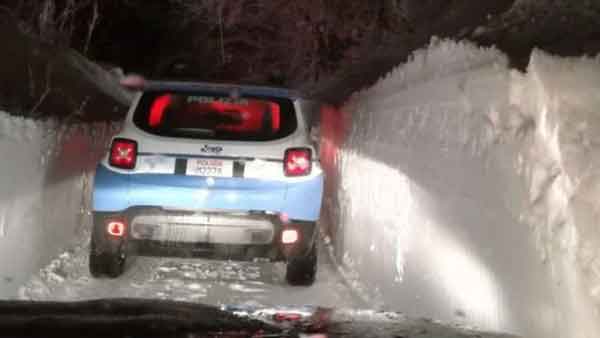
Abruzzo, Italy (BBN) - Rescuers have removed three bodies from a hotel engulfed by an avalanche in central Italy as a desperate search for up to 30 other people continues.
Heavy snow and disruption caused by multiple earthquakes have hindered rescue efforts in the rubble of the Rigopiano hotel, in the Abruzzo region, reports BBC.
The disaster struck on Wednesday evening but rescuers only reached the site on Thursday as roads were blocked.
Two people who were outside the hotel at the time of the avalanche survived.
Four earthquakes above magnitude 5 rocked central Italy on Wednesday, with tremors continuing into the night.
The quakes compounded problems resulting from snow and freezing weather, with power lines brought down and villages temporarily cut off.
Rescue operations are under way across central Italy and European Commission President Jean-Claude Juncker has said the EU is ready to help.
"Heartfelt condolences to those who lost loved ones in Italy," he wrote in a tweet, in English and Italian. "Europe is ready to help. Siamo tutti vicini all'Italia [We are all Italy's neighbours]."
What happened?
The roof on the four-star spa hotel, close to the Gran Sasso mountain in the Abruzzo region, partly collapsed on Wednesday night.
Rescuers say at least 20 tourists and seven staff were inside at the time, among them children.
Local residents in Farindola alerted emergency services.
"There are many deaths," Antonio Crocetta, the head of a mountain rescue team, was quoted as saying earlier on Thursday morning.
Italian media reported that some guests at the hotel had been able to send text messages after they were trapped.
"Help, we're dying of cold," Ansa news agency quoted one couple as saying.
The two people found alive outside were taken to hospital, one suffering from hypothermia.
Giampiero Parete, whose wife and two children are missing, said he had gone to get something from his car when the avalanche hit.
"I was covered by the snow but I managed to get out," he said. "The car was not submerged and I waited for the rescuers to arrive."
Why is the rescue work so difficult?
"The hotel is almost completely destroyed," Antonio Crocetta, a member of the Alpine rescue squad who was at the scene, told Reuters news agency by phone.
"We've called out but we've heard no replies, no voices. We're digging and looking for people."
Italian media say the first rescuers only reached the hotel on skis at 04:00 local time (03:00 GMT) on Thursday.
Video footage showed them shovelling through a wall of snow.
The civil protection agency said it was now trying to get rescue vehicles to the hotel.
Italian media say three bodies have been extracted while, according to an unconfirmed report, a fourth body has been found inside but not yet recovered.
The head of the civil protection agency, Fabrizio Curcio, said at times of heavy snowfall, they advise people to stay inside but in areas affected by earthquakes, people should leave their homes.
Putting together the two, he said, was extremely complicated.
How did this come about?
Wednesday's quakes came after the regions of Abruzzo, Marche and Lazio were hit by days of heavy snow.
One person in the area died on Wednesday and another was reported missing.
The same region was hit by an earthquake on 24 August, when 298 people died.
Another earthquake in October killed no-one, as most of the population centres had been evacuated.
Since then, the region has been hit by cold weather and snowstorms.
The Apennines region saw three magnitude-6 tremors between August and October. A succession of quakes like this is often how the geology works.
The big picture is reasonably well understood. Wider tectonic forces in the Earth's crust have led to the Apennines being pulled apart at a rate of roughly 3mm per year - about a 10th of the speed at which your fingernails grow.
But this stress is then spread across a multitude of different faults that cut through the mountains. And this network is fiendishly complicated.
It does now look as though August's event broke two neighbouring faults, starting on one known as the Laga and then jumping across to one called the Vettore.
Then came October with a swathe of quakes that broke the rest of the Vetorre. But the stress, according to the seismologists, wasn't just sent north, it was loaded south as well - south of August's event.
And it's in this zone that we have now seen a series of quakes in recent days. About a dozen magnitude fours and fives.
BBN/MS/SK